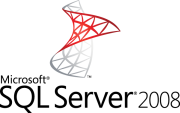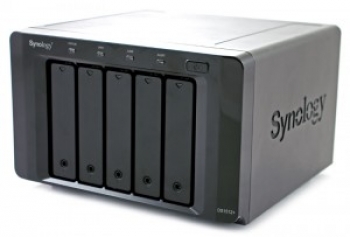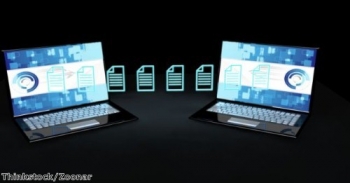- Home
- About Us
- Recovery Services Individual RecoveryEnterprise RecoveryAdditional Recovery
- Software
- Testimonials
- Locations
NAS Data Recovery – RAID Services
Mass storage media has gone through an extraordinary evolution in the past ten years. From the migration of server side technology only being available to high end enterprise corporate entities to the average end user in their home trying to maintain their critical data the influx of simple storage devices has been astronomical. There are two basic reasons for the market supporting larger mass storage solutions.
First, the amount of data that the end user creates is 100 fold more than it was ten years ago. With the common use of mobile phone technology used to store contact, image, video, and audio file information it is important to make sure that there is enough storage space to maintain all of the data generated by mobile technology. In addition, there is data generated on the personal computer such as tax, email, etcetera that also will take up space as an archival necessity.
Secondly, and more importantly, is the overwhelming requirement to ensure that the data created is safe, secure, and easily accessible. Initially the amount of data created and its importance was negligible but over the years and especially in the past five years, software technology as well as internet speed has made the personal computer an integral part of the day to day chores and entertainment of the average home. Tax data, email data, contact data, and to an even larger degree home business data has become a fulcrum of the personal computer and as such made the data it houses virtually irreplaceable.
With all of this being said the technology to help defray these two needs was poor at best and dangerous in many instances. Before the NAS device the world offered external hard drives. These hard drives were mobile and convenient using a simple USB connection to allow access to the device. The problem with this technology is many fold. First, hard drives are not meant to be mobile, they are meant to be stationary so they do not get bumped of dropped. An external USB drive is susceptible to all of these pitfalls and as such is prone to damage. Second, the drive is not cooled. For the most part USB drives do not have any type of cooling to make sure the drive does not overheat and then ultimately cause a head crash and data loss. Third, the power to a large extent is not steady and or enough to maintain the proper RPM of the drive. This can also lead to data loss and mechanical failure.
DIY Data Recovery ‘Is Never A Good Idea’
Many companies will face the situation whereby their IT systems fail and they need to act fast in order to recover any lost data and get back up and running as quickly as possible.
However, in some cases, employees might be tempted to resort to DIY data recovery practices, but this invariably is not a good idea and could lead to individuals doing more harm than good in the long run.
This is the view of Richard Cuthbertson, head technician at Xytron, who argued all disc drives clean room environments and to exacting tolerances. It can therefore be extremely risky to try to operate on faulty or unresponsive IT infrastructure if individuals do not have the necessary expertise or training to do so with causing further headaches down the line.
IBM Cloud Virtualized Server Recovery (VSR) – Service Introduction
With cloud service becoming ubiquitous for sever operations, it’s a natural progression for servers themselves to be backed up in the cloud
It’s been estimated that server downtown can cost a company upwards of $50,000 per minute, so the need for a server backup solution you can trust is imperative.
IBM has a very robust, efficient, and reliable solution to ensure that server downtime is kept to a minimum. Why IBM? They are an innovator in the field of disaster recovery, with more than 50 years of experience in business continuity and resiliency.
At the heart of the IBM Cloud Virtualized Server Recovery system (VSR), which keeps up-to-the-second backup copies of your protected servers in the IBM Resiliency Cloud, are bootable disk images of your servers. If an outage occurs your servers are automatically backed up via a web-based management portal that can be fully automated.
Vmware Data Recovery Software
How to recover deleted vmdk vdi vhd files
If you deleted VMware (.vmdk), ORACLE (.vdi), and Microsoft (.vhd) virtual image files, you can use virtual machine data recovery freeware to undelete those vmware files. The virtual machine data recovery software can recover lost files from virtual machine.
- Recover all deleted Office Documents, Image and Multimedia Files, Database Files from virtual machines
- Restore all data from virtual machines lost due to formatting and file system corruption
- Supports easy recovery from FAT16, FAT32, NTFS, exFAT file, and NTFS file systems based virtual drives
To recover lost deleted formatted virtual machine files from Windows computer, you need to download a virtual machine data recovery freeware. You may download virtual machine data recovery software for free from: here
The Vmware data recovery software free can undelete files from virtual machine on Windows 8/7/XP/Vista 32/64 bit hard drive, include IDE and SATA hard disk, Hitachi, Western Digital WD, Seagate, Samsung hard drive. The Vmware data recovery software is also able to unformat HDD and restore lost photos jpg jpeg png gif tif tiff bmp and raw image data, videos (MP4, AVI, 3GP, AVCHD, H264, MPG, MPEG, MOV, WMV, ASF, VOB, M2TS, etc), and music (MP3, WMA, OGG, M4A) files. The Vmware file recovery software can retrieve back any lost files from Windows computer such as HP EliteBook, Lenovo ThinkPad, Asus Transformer Book T100, Acer, Samsung, Sony Vaio, Dell, Toshiba Kira Ultrabook and Qosimo, Fujisu, Panasonic, etc.
Steps to recover deleted files from virtual machine
Step 1. Install and run Vmware data recovery software asoftech data recovery and then in Asoftech Data Recovery, select drive where vmware files are deleted, then press "Next" to start scanning drive for lost files.
How to Rebuild System Databases in SQL Server 2008

In SQL Server 2005, we introduced a different method than in previous versions to rebuild system databases (affectionately known as "rebuild master"). You were required to use the setup.exe program with command line switches.
This is no different in SQL Server 2008 but the command line switches have changed some and the process behind the scenes to rebuild the system databases (master, model, and msdb) is also a bit different.
Currently the SQL Server 2008 Books Online only mention an option for setup called /REBUILDDATABSES (See this link) but this information is not correct so I'll outline how to do this here in this blog post. We will also get our documentation updated to reflect this information.
The syntax for using setup.exe to rebuild the system databases is as follows:
setup.exe
/QUIET
/ACTION=REBUILDDATABASE
/INSTANCENAME=instance_name
/SQLSYSADMINACCOUNTS= accounts
[/SAPWD=password]
[/SQLCOLLATION=collation_name]
Here are the details about how to use this syntax and how it works:
Copyright © 2024 DataRecoup Recovery Services. All Rights Reserved. Designed by DataRecoup Lab.




